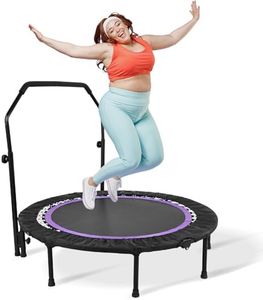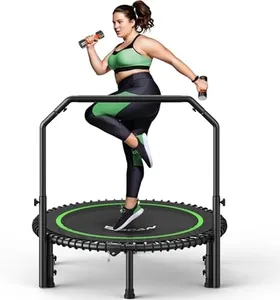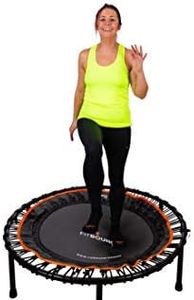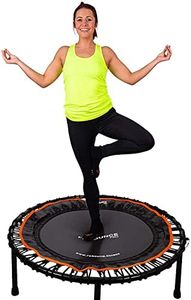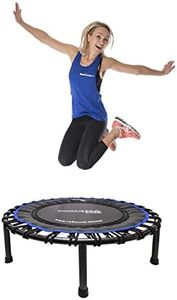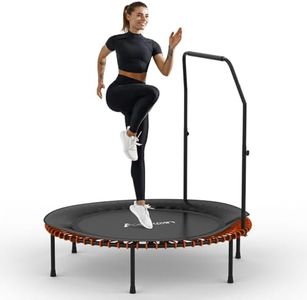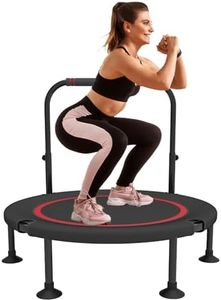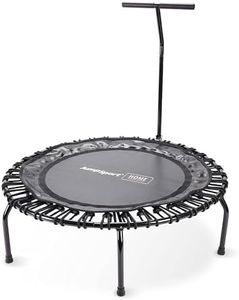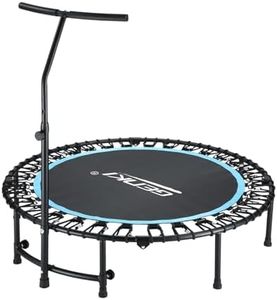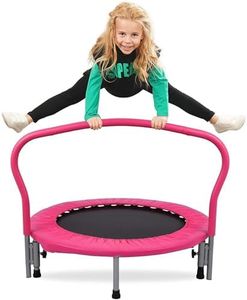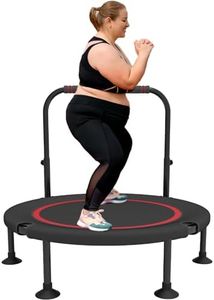We Use CookiesWe use cookies to enhance the security, performance,
functionality and for analytical and promotional activities. By continuing to browse this site you
are agreeing to our privacy policy
10 Best Rebounder Trampolines
From leading brands and best sellers available on the web.Buying Guide for the Best Rebounder Trampolines
Choosing a rebounder trampoline can be a great way to boost your fitness at home, but with so many options out there, it’s important to understand the key features that make a difference. Start by thinking about how you plan to use the trampoline: will it be for light exercise, high-intensity workouts, rehabilitation, or maybe even fun activities for multiple family members? Knowing your primary goal helps you navigate the specifications wisely, so you end up with a rebounder that suits your needs, is safe, and lasts for years.Size (Diameter)The size of a rebounder trampoline, usually measured by its diameter, has a big impact on how it feels and where you can use it. Smaller diameters, like 36 to 40 inches, are more compact and fit in tight spaces, making them ideal for small apartments or rooms. Larger sizes, like 45 inches and above, offer a bigger bouncing area and can provide added comfort and confidence for new users. To decide, consider both the space you have and your comfort level with balancing on a smaller or larger surface.
Weight LimitThis is the maximum user weight the rebounder can safely support. A higher weight limit (often ranging from 200 to 350 pounds or more) is crucial for safety and durability, especially if heavier adults intend to use the trampoline, or if multiple users will share it. Always check your weight against the product's stated limit to ensure safe and long-lasting use.
Bounce Type (Springs vs. Bungee Cords)There are two main types of bounce mechanisms: metal springs and bungee cords. Spring-based rebounders generally offer a firmer, higher bounce suited for aerobic workouts, but they can be noisier and harder on the joints. Bungee-based models give a softer, quieter, and more joint-friendly bounce, making them better for gentle exercise and rehabilitation. Think about whether you need more shock absorption or a firmer surface, and pick accordingly.
Stability FeaturesStability features include things like non-slip feet, a wider base, and optional stability bars. Non-slip feet help prevent sliding during energetic workouts, while a wide base keeps the trampoline steady. Some models offer a removable handlebar to give extra balance support, which can be very helpful for beginners or seniors. Consider your balance and the type of exercises you’ll do—if you’re new or want more security, look for added stability features.
Assembly and PortabilitySome rebounders require assembly, while others come mostly ready to use. Foldable designs and lightweight frames are best if you need to store or transport the trampoline often. If you plan to leave it in one spot, a solid, non-foldable frame may feel sturdier. Your need for easy storage or portability should guide your choice here.
Mat Material and Surface QualityThe jumping mat’s material affects durability, comfort, and performance. High-quality mats are typically made from woven polypropylene or similar tough, flexible fibres, offering a smooth bounce and lasting longer under regular use. If you expect heavy use or want a more comfortable, responsive surface, check for quality mat materials and solid stitching.
